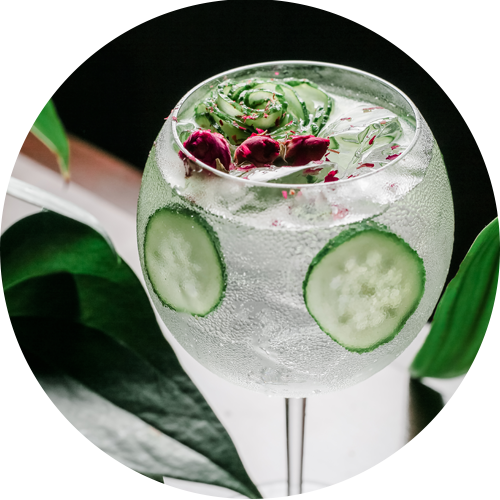According to historians, gin dates back to the Middle Ages, over one thousand years ago. However, the first written record of the spirit was not until the 18th century when the term Jenever was coined in Holland after a German man living in that country researched a drink that aided blood circulation and identified the formula that had been passed down through the centuries, almost intact.
We owe the simple name “gin” to England, during the reign of William III, when production increased after a law requiring a license to manufacture it was abolished. It was so popular that historical records from 1750 indicate that one in five houses in London sold gin. At that point, it was considered the country’s national drink.
Although this liquor has gone through moments of splendor and disfavor, today it is back with a vengeance. One explanation for this renaissance is the spirit’s low calorie content. This quality is highly valued by new consumers, including women and younger clientele, who are more proactive about leading healthy lifestyles.
It also pairs well with flavoring trends promoted by the leading brands. They are placing bets on enhancing their formulas with citrus notes like orange, lemon and grapefruit or the Brazilian Cravo lemon and, of course, red fruits such as strawberry, raspberry and red currant.
In short, the updated version of gin—with its original high proof between 37° and 47°—aims to give customers a different, playful and, above all, delicious consumer experience.
Gin & Tonic has taken a similar path. This iconic cocktail made with gin and tonic water is currently enjoying its day in the sun.
Diverse studies rank it among the most commonly launched flavors in Europe and Latin America, with strong positions in North America and other parts of the world such as the Middle East, Africa and Asia Pacific as well.
The COVID-19 pandemic played a key role in this development by encouraging brands to produce this variety of flavored alcoholic beverages (FAB) in individual R2D (Ready To Drink) formats, making a mixed drink as easy as opening the can or glass bottle and adding a couple of ice cubes!
Other manufacturers added light and non-alcoholic versions, along with new flavors with notes of our favorite citrus and red fruits.
In line with market trends, last year CRAMER developed a collection of natural flavors that can be directly incorporated into gin, with alternatives like Cravo lemon, lemon mint, ginger, orange, spicy, elderberry flower, cinnamon and berries, among others.
The Gin & Tonic flavor is also in our portfolio with its unmistakable bitter, citrus and slightly sweet profile. Our experts are working hard to innovate and come up with more proposals for this classic cocktail and related beverages using fruit and botanical touches, in order to provide new, vibrant experiences for consumer senses.






